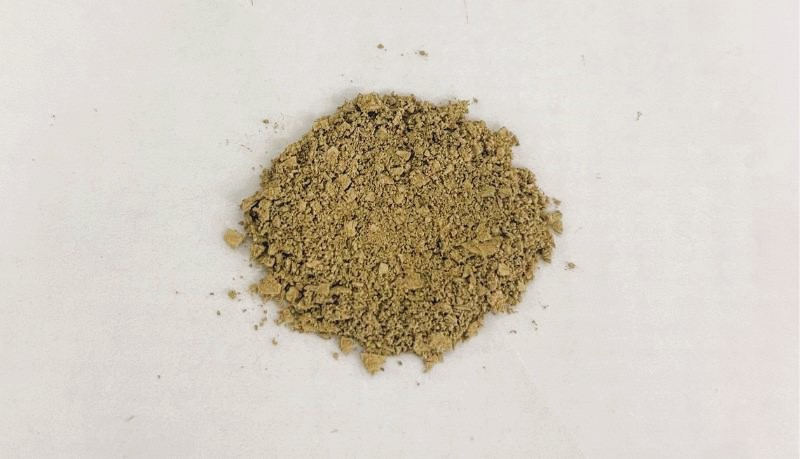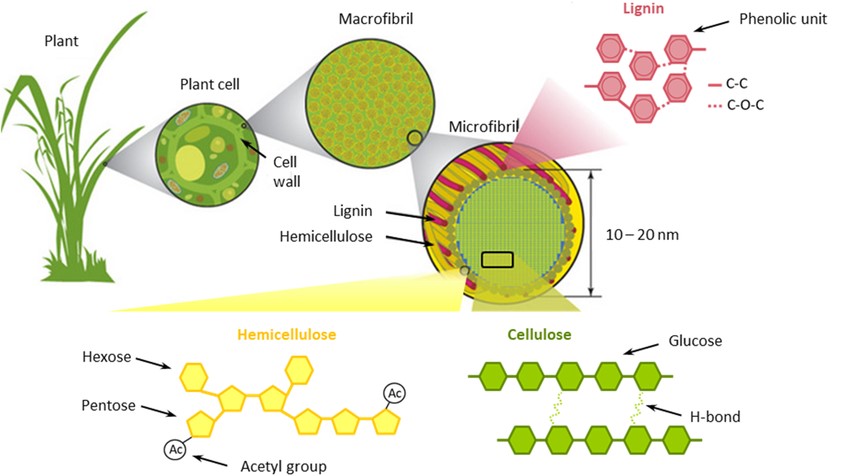What is Lignin?

Lignocellulosic biomass is primarily composed of three components: cellulose, hemicellulose, and lignin. Among these, lignin is the second most abundant biopolymer (after cellulose) found in nature, making it a crucial component of plant cell walls. It acts as a glue, binding cellulose fibers together and providing rigidity and strength to the cell wall. This allows plants to stand upright and resist environmental pressures. Lignin is composed of aliphatic and aromatic hydrocarbons. It’s a complex molecule composed of several different building blocks called monolignols. These monolignols link together in various configurations, creating a heterogeneous (non-uniform) structure. Lignin is also hydrophobic, meaning it repels water. This property helps to protect the plant from excessive water uptake and microbial attack.

Schematic structure of lignocellulose components from Filippo Br. et al., RSC Sustainability, 2024, 2, 37–90
